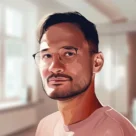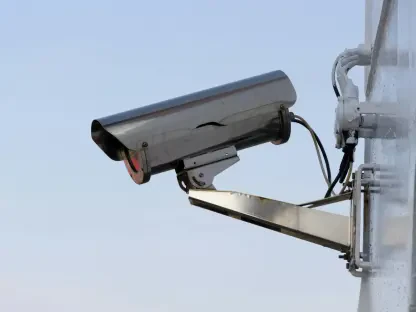The landscape of AI-powered text-to-image generation has significantly evolved, especially with the emergence of alternatives to OpenAI’s DALL.E. These new models promise innovative features and refined capabilities, making them valuable assets for creatives and developers. The transformation from textual descriptions to vivid images has become a marvel of modern AI, enabling countless creative possibilities. This progress has allowed other models to step into the spotlight, offering unique functionalities and potentially surpassing DALL.E in certain areas. Let’s delve into the top alternatives that stand poised to redefine the intersection of textual descriptions and visual artistry.
An Introduction to DALL.E’s Legacy
DALL.E, developed by OpenAI, revolutionized how AI could transform textual descriptions into vivid images. Developed with the goal of bridging language and visual representation, DALL.E’s contributions have been monumental. The model’s inception with DALL.E 1 was groundbreaking, but it was DALL.E 2 that truly shined with its enhanced photorealism and improved caption matching. Utilizing a diffusion process that begins with random noise and evolves into coherent images, DALL.E 2 set a high benchmark in AI creative tools. This iterative process involved introducing noise into an image and gradually refining it based on the provided text prompts. This innovation set a precedent, leading to the exploration of other similar models that can perform, if not exceed, DALL.E’s capabilities, thus enriching the AI creative landscape.
DALL.E 2 went beyond just creating images; it offered a deeper understanding of how textual data could be translated into detailed and realistic visuals. Its ability to generate photorealistic images from complex descriptions without human intervention opened up new avenues in design, advertising, and even entertainment. This progression naturally spurred interest in discovering other models that could match up to or surpass DALL.E’s abilities, thereby pushing the boundaries of what is possible in AI-driven image creation.
CLIP: The Versatile Visual Classifier
One of the prominent alternatives is CLIP (Contrastive Language-Image Pre-training), also created by OpenAI. CLIP introduces a novel approach by focusing on the classification of images rather than creating them from scratch. Trained on a vast dataset of 400 million image-text pairs, CLIP excels in learning visual concepts from text descriptions. This model’s training involved pairing images with descriptive texts, enabling it to understand a wide range of visual and textual concepts effectively. This open-sourced tool is not only efficient but also versatile, handling various tasks such as object recognition and geo-localization.
Moreover, CLIP’s reliance on readily available internet data cuts down on costs significantly, making it accessible for a broader range of applications. By utilizing existing images and texts, CLIP can perform a variety of visual classification tasks without needing custom datasets, thereby reducing the complexities and costs associated with traditional AI training methods. Its adaptability across numerous visual classification tasks highlights its potential in diverse fields, from social media content filtering to sophisticated AI-driven marketing tools. The model’s ability to handle tasks like emotion recognition in images or identifying unique landmarks demonstrates its broad applicability and the efficiency of leveraging pre-existing, abundant data.
RuDALL.E: The Russian Counterpart
RuDALL.E is another exciting contender in the text-to-image arena. Hailing from Russia, this model builds upon the foundations laid by ruGPT-3, integrating a significant volume of data and computational power to achieve its impressive results. RuDALL.E is trained on a massive 600GB of Russian text, giving it a robust linguistic base that underpins its image generation capabilities. Available in two versions: the Malevich (XL) model with 1.3 billion parameters and the Kandinsky (XXL) model with 12 billion parameters, RuDALL.E showcases a range of features catering to various degrees of complexity and detail in text-to-image conversion.
What makes RuDALL.E distinctive is its use of the VQGAN model, which translates images into character sequences, enabling it to generate entirely new visuals from textual descriptions. This approach allows the model to create detailed and imaginative visuals, even inventing objects that don’t exist in reality, thereby showcasing its sophisticated understanding of image composition and text correlation. Such capabilities are particularly valuable for creatives seeking innovative visual outputs, whether in advertising, art, or interactive media. The model’s ability to produce surreal and hyper-realistic visuals extends its utility beyond traditional applications, capturing the interest of those in the avant-garde and conceptual art spaces.
X-LXMERT: Bridging Visual and Language Elements
Developed by AI2 Labs, X-LXMERT takes text-to-image generation a step further by building on the work of the LXMERT transformer known for interlinking visual and language elements. The X-LXMERT model introduces a few key innovations that enhance its performance and applicability in generating high-quality images from text. These innovations include discretizing visual representations, extensive masking with a broad range of ratios, and aligning pre-training datasets with appropriate objectives. These enhancements allow the model to better parse and synthesize complex visual data from textual descriptions, resulting in more accurate and contextually relevant image outputs.
By employing Gibbs sampling for iterative feature sampling across spatial locations, X-LXMERT stands out in generating more accurate and contextually relevant images. This method allows for finer control over image details and better adherence to the descriptive text, making the outputs more nuanced and precise. This approach contrasts with the fixed order generation in text, positioning X-LXMERT as a robust alternative for applications needing detailed and precise visual representations derived from text. The model’s ability to maintain contextual integrity while generating detailed images proves invaluable for applications in areas like virtual reality, digital design, and simulation training.
GLID-3: The Hybrid Model
GLID-3 amalgamates the architectural principles of OpenAI’s GLIDE model with latent diffusion techniques and CLIP. This hybrid approach allows GLID-3 to generate realistic images from textual prompts though on a smaller scale compared to DALL.E. Training on photographic-style images enables GLID-3 to produce natural-looking visuals that are well-suited for straightforward tasks requiring clear and lifelike imagery. Despite its smaller scale, the model’s integration of concepts from GLIDE and CLIP enhances its efficiency and capability in image generation.
While GLID-3 might not be as imaginative as its counterparts, it excels in producing straightforward, lifelike images suited for less complex tasks. Its design makes it a practical choice for users who prioritize practicality and resource efficiency in their text-to-image generation needs. For applications such as automated content creation, educational materials, and basic graphic designs, GLID-3 offers a reliable and cost-effective solution. The model’s streamlined approach ensures that it delivers consistent results without requiring extensive computational resources, making it accessible to a wider audience including smaller enterprises and individual creators.
Common Themes Among Alternatives
Several common themes emerge across these leading DALL.E alternatives, reflecting the diverse yet interconnected strategies in AI development. Most notably, the use of diffusion processes and extensive pre-training datasets bridges the gap between textual and visual domains effectively. These techniques ensure that the models can generate high-quality images that accurately reflect the provided textual descriptions, showcasing the importance of robust pre-training in achieving superior performance in text-to-image tasks.
The models also vary significantly in parameter sizes, reflecting their differing capacities for handling complex visual data. For instance, DALL.E 2 and RuDALL.E’s Kandinsky model are at the higher end of the spectrum, equipped to deal with intricate and detailed image creation. In contrast, models like GLID-3 operate on a smaller scale but maintain efficiency and reliability for simpler tasks. Innovations in textual and image interpretation are another shared aspect, whether through the advanced techniques seen in X-LXMERT or CLIP’s cost-effective use of available internet data. This convergence of innovative approaches underscores a collective progress in making AI-driven creative tools more sophisticated and accessible.
A Global Shift Towards Advanced AI
The landscape of AI-driven text-to-image generation has seen remarkable growth, particularly with the arrival of various alternatives to OpenAI’s DALL.E. These new models are packed with innovative features and enhanced capabilities, making them indispensable tools for creatives and developers alike. The ability to transform written descriptions into vivid images has become one of the wonders of modern AI, opening up a vast array of creative possibilities. This breakthrough has allowed other models to emerge and capture attention by offering unique functionalities, potentially even surpassing DALL.E in certain respects.
These models are not just mere copies but bring distinct advantages and improvements, adding more versatility to the realm of visual creation. While DALL.E has been a pioneering force in this technology, the new contenders are making waves with their own sets of strengths. They provide diverse options for users seeking to explore the merger of textual nuances and visual artistry.
Let’s dive into the top alternatives that are set to redefine how we understand and utilize the connection between textual descriptions and visual creativity. These emerging tools promise to offer fresh perspectives and expanded capabilities, making the interplay between text and image more dynamic than ever before.









